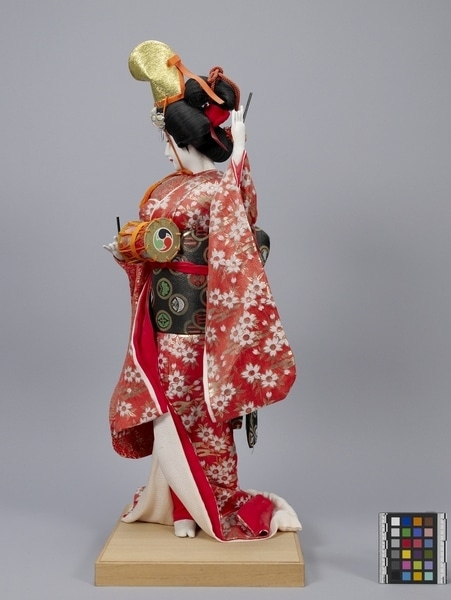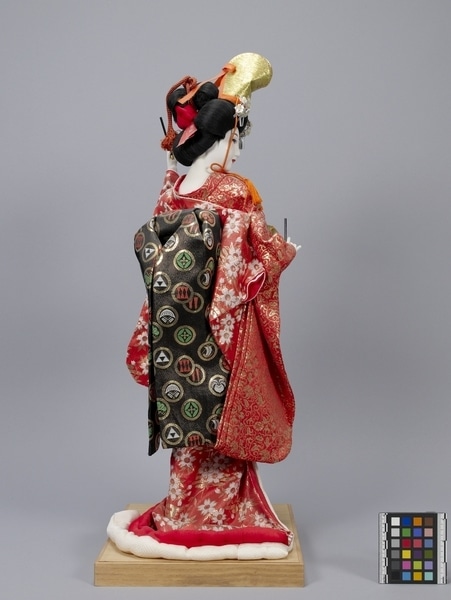Doll Item Number: Ed5.2963 from the MOA: University of British Columbia




Description
Female doll elegantly and elaborately dressed in traditional costume. Gold headdress decorated with two silver metal flower bunches at each side of head and tied on with orange cord. Red bow and red and gold with white blossoms in hair. Kimono lined with red then pink cloth has long train trailing onto base and is tied at waist with red sash. Her right foot shows from under the long, tight red skirt. black and gold with multi-coloured circular motifs decorate kimono. Gold and red drum with orange cord and motif of 'tomoe' on each side in green, orange, and dark purple, is tied below waist. Figure stands on wood base and is turned sideways. Her left hand is in the air about to strike the drum with a black, gold-tipped drumstick while her right hand is bent at side and is also about to strike the drum.
History Of Use
Apparel often times represents festival costumes; status of wearer and time period can be identified by style. Dolls are handmade; body parts mass produced; one doll can take craftsman, most often a woman, up to a year to complete. Earliest dolls were figures of warriors and were offered at graves of nobles in place of human sacrifice. Possession of an elegant doll brings prestige to owner, are inherited, and are purchased at great expense. On March 3rd, the day of Hinamatsuri, The Doll Festival, little girls display their finest dolls. Boys display their warrior dolls on another day. Dolls first appeared in North America in the 1920's when many were sent as gifts of good will.
Cultural Context
costume; traditional; decorative
Item History
- Made in Japan before 1976
- Owned by Department of Asian Studies U.B.C. Department of Asian Studies before October 1, 1976
- Received from Department of Asian Studies U.B.C. Department of Asian Studies (Donor) on October 1, 1976
What
Who
- Culture
- Japanese
- Previous Owner
- Department of Asian Studies U.B.C. Department of Asian Studies
- Received from
- Department of Asian Studies U.B.C. Department of Asian Studies (Donor)
Where
- Holding Institution
- MOA: University of British Columbia
- Made in
- Japan
When
- Creation Date
- before 1976
- Ownership Date
- before October 1, 1976
- Acquisition Date
- on October 1, 1976
Other
- Item Classes
- textiles
- Condition
- good
- Accession Number
- 0345/0001